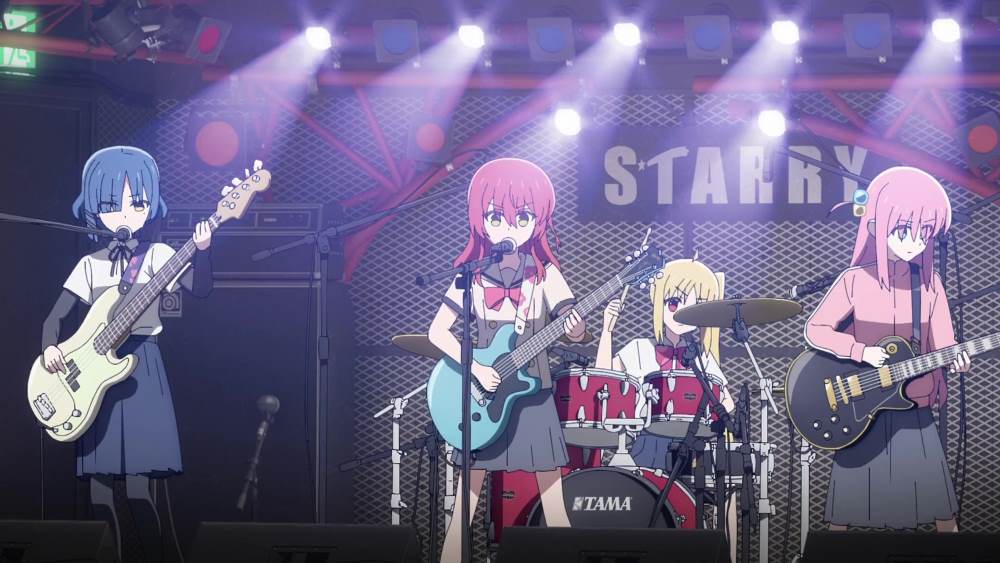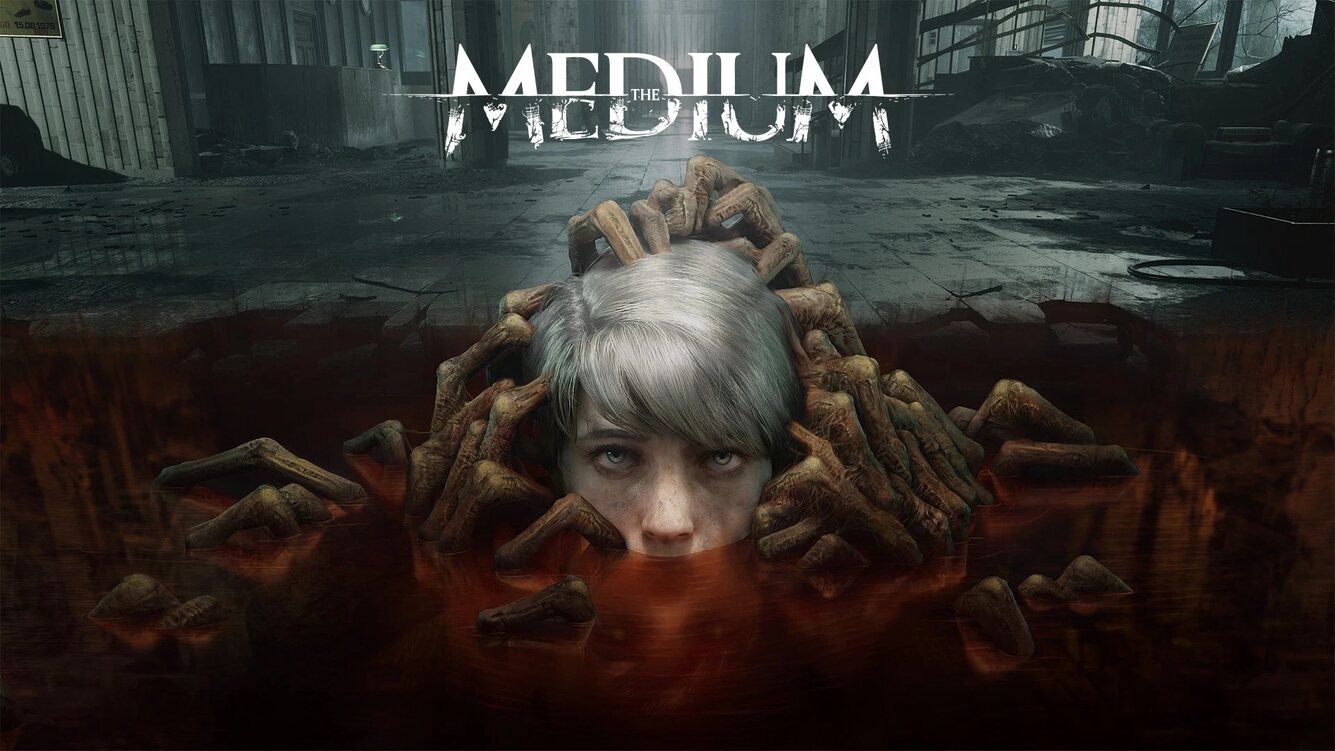Eiyuden Chronicle: Hundred Heroes Hands-On Preview
Suikoden’s spiritual successor, Eiyuden Chronicle: Hundred Heroes, won’t be out until April 2024, but the hype has been building up for this title slowly but surely as RPG fans could have another promising hit to look forward to in the months ahead.
We were fortunate enough to try out a hands-on demo of Eiyuden Chronicle: Hundred Heroes at the 505 Games’ Future Play Event ahead of Tokyo Game Show, which includes one of the early levels in the game and two complete dungeons.
Not only that, but we were also able to clarify some of the gameplay mechanics straight from the developers at Rabbit and Bear Studios, including the creator of Suikoden 1 and 2, Yoshitaka Murayama himself. Sharing the space with Murayama-san is the game director Osamu Komuta, character designer Junko Kawano, and art director and producer Juninchi Murakami.
The demo build we played featured an early story mission in Eiyuden Chronicle Hundred Heroes featuring two of the protagonists shown in the recent trailer: Nowa, a humble villager, and Seign, an officer from the empire. The build we played was entirely in Japanese so we were not able to understand the details of the mission, but it involved traversing through the forest outskirts and exploring a ruin with ancient technology.
Joining us in Nowa’s party were the kobold warrior, Gaou; a samurai, Mio; and a monk Lian. Seign and his attendant rounds out the party of six, consisting of a front row attacking party and a back row with mid and long ranged fighters and magic users.
I asked Murayama-san during the interview how much of the characters will play into different roles. He said via a translator that while a chunk of the hundred heroes will be playable, meaning able to participate in a party and in combat, other characters will serve either as generals in the war mode or as townspeople who help you earn money through shops and services.
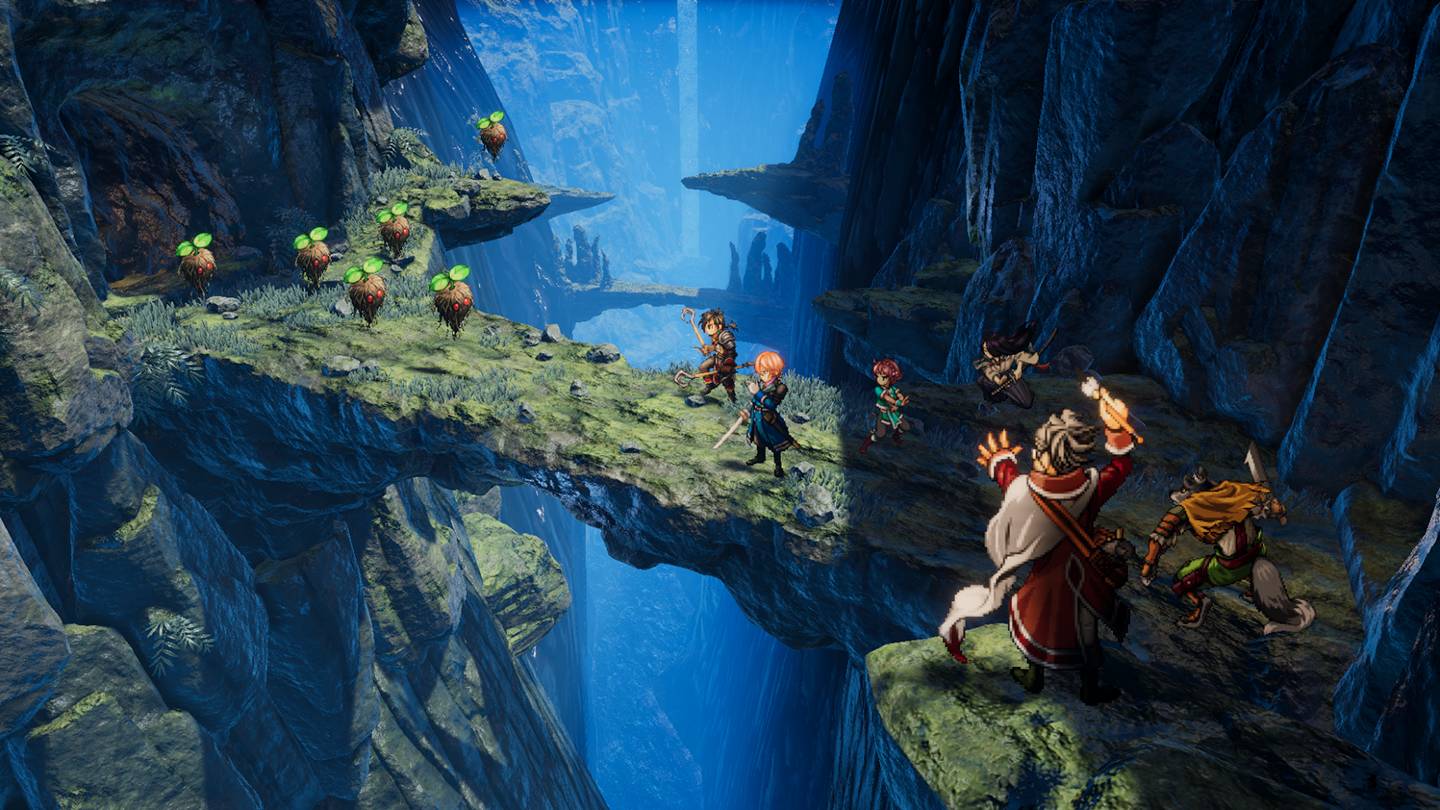
While we didn’t get to experience the War Mode in this demo, I asked how similar it will be with the original Suikoden game. In particular, I referred to a specific mechanic of character permadeath if they are randomly killed as a war casualty. In a nervous laughter, Murayama-san said it is a currently a surprise for the final build of the game.
Further into exploring the forest outskirts, we finally get to experience the majesty of Eiyuden Chronicle: Hundred Heroes for the first time. I have to say that the pixel art and backgrounds are on point and consistent with the radiant character designs by Kawano-san. The light orchestra transitioning into the adrenaline pumping music also was a sensory delight as it hearkens back to the 16 to 32-bit era of JRPGs.
The fusion of 2D and 3D comes together quite seamlessly with this demo build. It is definitely a huge feat, as detailed by Komuta-san who mentioned that the 2D 3D fusion was one of the biggest challenges he had to overcome, which includes an “overwhelming amount of trial and error in how to put a 2D board [to] exist in a 3D space in a good way.”
Eiyuden In Action!
Getting to play around 1 hour of the game, we got to learn more about bits and pieces of the story and gameplay, involving village interactions and the exploration sequence throughout the interconnected dungeons that involved the forest outskirts and the ancient ruins.
An encounter starts with the prompt of engaging auto-battle or to manually input your commands. If you engage in auto-battle, it’ll resolve with your characters attacking and using commands. Manually inputting commands opens up a whole range of choices from the basic attack, battle commands that use SP or MP, selecting a defensive stance, and using items. Fairly standard turn-based RPG stuff.
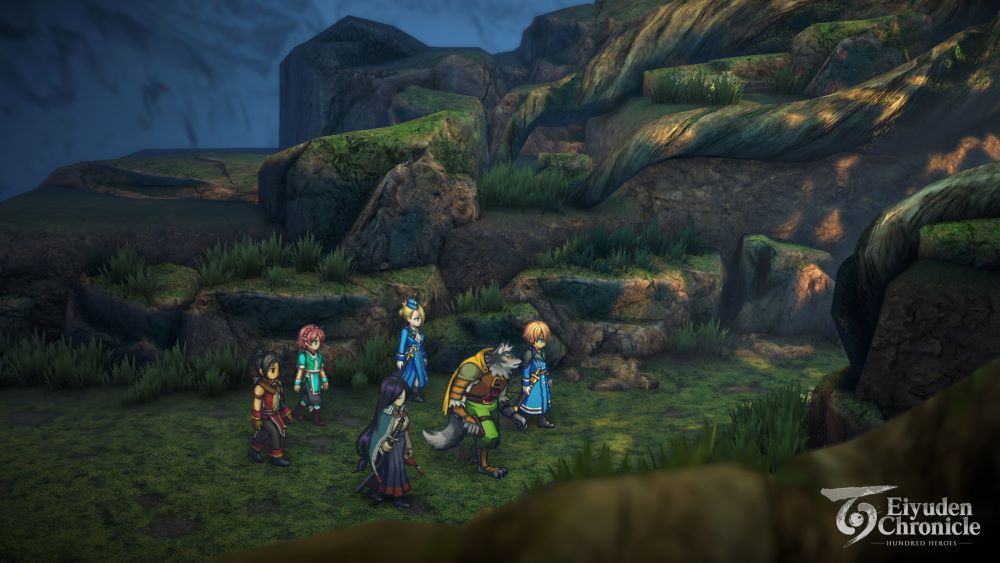
Just like Suikoden before Eiyuden Chronicle: Hundred Heroes, the mechanic of the front row characters protecting the back row characters is in full effect. You will need to defeat them before moving on, so during the command input, the targeting mechanic doesn’t allow you to target the back row while they are reinforced. Battle commands that use MP can be selected right away if you have available MP to spend, however, you will need to charge SP by fighting normally before they can be used.
As you complete your commands, the battle will resolve depending on the speed of each character. A slower characters such as Gaou will attack in the end, while a speedy character like Mio completes their attacks at the start of the round. If the speed of the character matches the speed of the enemy, they will attack simultaneously. Similar to Suikoden, the resolutions of Eiyuden Chronicle: Hundred Heroes work the same way, but seeing it in motion using a modern engine is something pretty unique.
Eiyuden Chronicle: Hundred Heroes is clearly inspired by Suikoden, and it is most evident here in combat. That said, it’s not hard to feel more immersed and engaged in the action sequences because of the upgraded visuals and effects that light up the battlefield.
Decisive Battle!
Eiyuden Chronicle: Hundred Heroes hits fever pitch as we faced off against two bosses in this preview, one of which was a spider mid-boss at the forest outskirts. While it was easier to vanquish by merely chipping away at its health and using skills to aid in offense and defense; the second Golem boss was the one that allowed us to explore some of the new mechanics used in Eiyuden Chronicle: Hundred Heroes.
During the interview, I asked Murayama-san about the Hero Combo (Eiyuu Combo), one of the flashier parts of Eiyuden Chronicle: Hundred Heroes. The only requirement is that both characters must not already be given a command before you can select the action. It involves the use of two or more characters who can deal massive damage without the cost of SP or MP.

Murayama-san mentioned that to unlock more Hero Combos, we must collect heroes to unlock these moves, where camera angles shift to highlight the devastating attack, providing that extra added oomph to keep the blood pumping. Murayama-san appears to be proud of this mechanic, as he spoke about it in detail talking about how the camera actions are a lot smoother than the regular combat, which is presented as a constant wide shot.
The defensive command and gimmicks are also another mechanic that I clarified with Murayama-san as it was not clear with my limited understanding of Japanese. Eiyuden Chronicle: Hundred Heroes‘ combat really stands out from Suikoden because of these new commands, which expands the already dynamic combat. In this regard, Murayama-san deferred to Komuta-san about the specific details of these combat programming.
Komuta-san explains that gimmicks are field commands that give some characters an advantage. Speedy characters positioned in the corner are able to hide/dodge, so when the Golem boss start to target the side areas with their AoE, these characters who’ve used this gimmick are able to avoid damage.
Furthermore, some of these defensive commands become active commands, expanding the capabilities of certain characters. Murayama-san explains that these “tank characters” can choose to activate these techniques that allow them to counter enemy attacks. I believe he was referring to the Gaou character who is limited by speed, but by having this active defensive command on, he can take advantage of going last to protect the spellcasters who aren’t built tough.
With enough mettle, I was able to defeat the Golem boss and thus did my Eiyuden Chronicle: Hundred Heroes hands-on demo end. Overall, I enjoyed the game as it tickled some nostalgia that I missed from the original Suikoden 1 and 2 titles from the original Playstation. There were some quality-of-life mechanics I wished were available, such as displaying enemy HP and using the camera to spy areas ahead in the map. I do understand that the developers are aiming towards a classic 16-bit RPG experience, so I’ll reserve my final comments until the full version of the game.
Anticipating Release
We asked more about the developmental process of the game, which included challenges. Murakami-san shared “that it is the COVID pandemic measures that have to be completed remotely and handling that amount of work within the time frame and budget.” From what I’ve played, it already felt complete, and it is through this team’s hard work that I look forward to seeing what the final build is like.
We asked about the Kickstarter experience in terms of its development that required a level of transparency between the backers and fans. Murayama-san addressed it that they’ve “received a lot of support and feedback. The team examined the requested & implemented those that they felt should be implemented.,” such as the hardcore mode.
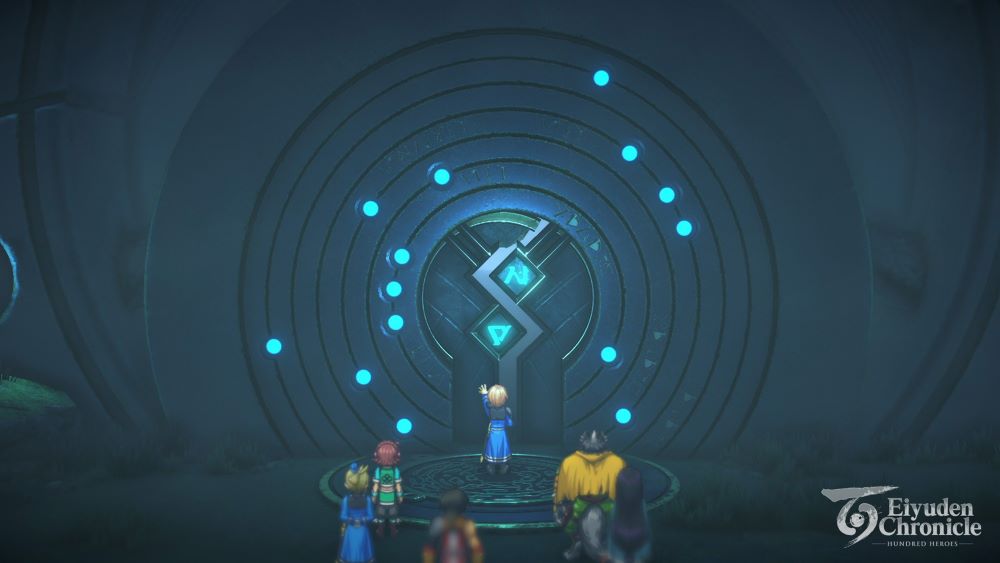
When asked about a physical copy of Eiyuden Chronicle Hundred Heroes for non-backers, at the moment, the developers politely can’t comment about non-backer copies, but they’ve suggested there are many surprises coming our way soon, so we’ll just have to wait for further updates from the team.
As we ended our interview, I expressed our love for the source material of the game and I looked forward to playing more of Eiyuden Chronicle: Hundred Heroes in the future. Having completed Eiyuden Chronicle: Rising, I asked what previous players can expect by loading their previously saved game to Eiyuden Chronicle: Hundred Heroes.
Murayama-san stressed that both Eiyuden Chronicle: Hundred Heroes and Eiyuden Chronicle: Rising are completely different games, but we who have played and enjoyed Eiyuden Chronicle: Rising can receive a surprise when loading their saved file.
Eiyuden Chronicle: Hundred Heroes launches next year on April 23, 2024 for the PS5, PS4, Xbox Series, Xbox One, Nintendo Switch, and the PC.

